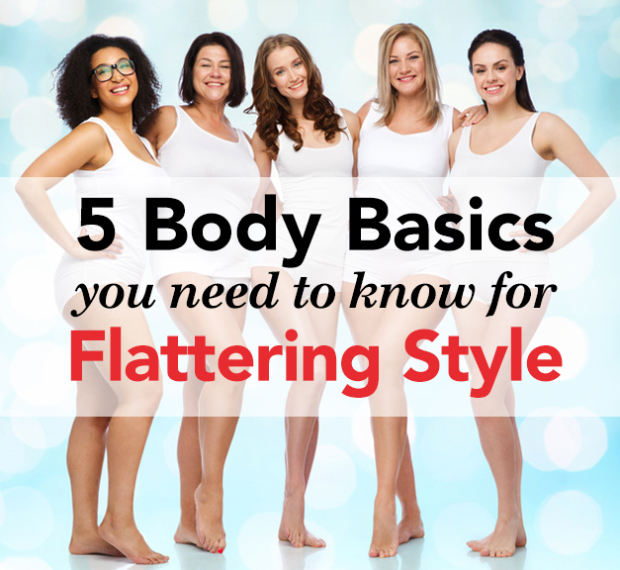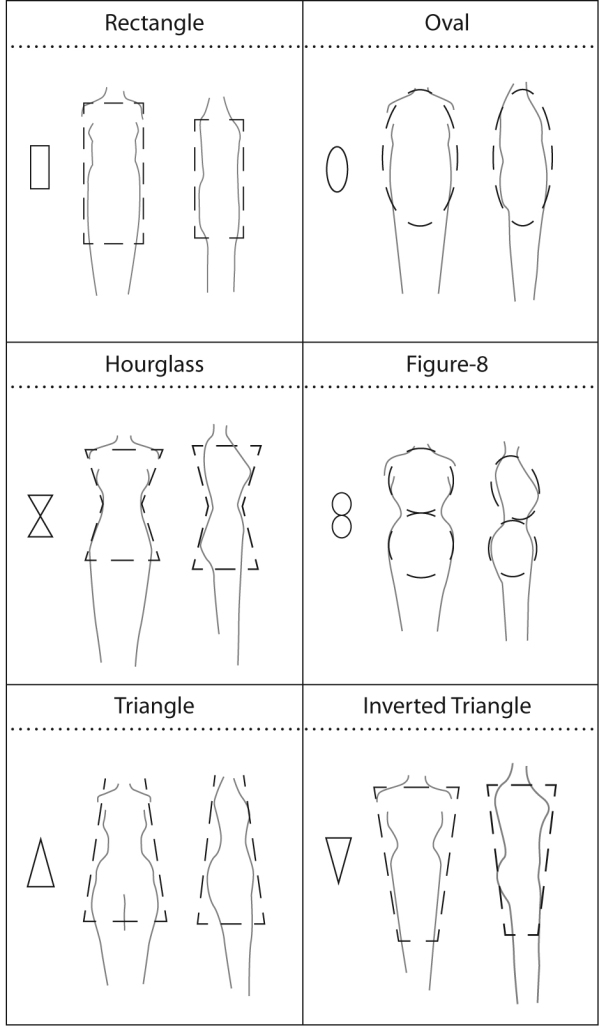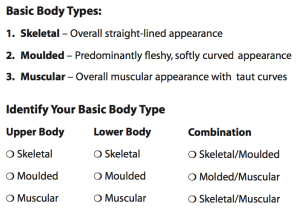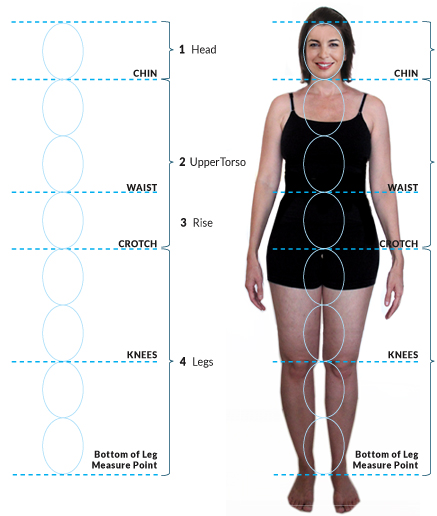5 Body Basics you need to know for Flattering Style
Finding outfits you love that are also flattering to your body can be a challenge for a lot of women. Sometimes it feels like a minor miracle when you pull it together to actually feel good about what you are wearing. Or when you see a garment you love hanging on a rack, try it on, and find it actually flatters you. Jackpot!!
What if I told you there is actually a science to getting it right? Sound scary? Don’t sweat it…but read on for insight. Having worked with thousands of women, with every body type imaginable, we’ve discovered there are some techniques that every woman can learn and practice. What a difference it makes to self-esteem and confidence when we know the right styles to choose and why. Not to mention saving tons of time & money when shopping… Quickly eliminating the styles that simply won’t work for you and trying only the ones that flatter your body & style.
Let’s dive right in to 5 basics you need to understand about your body to make winning choices. While I’ll give you an overview here, during our 3-day Style course these are covered in depth, as you fill in what we call “Your Body Chart.” This gives you a solid foundation for creating your best style, and ultimately saves you money that you previously would have spent on styles that didn’t work.
1. Your Body Shape / Silhouette
Identify which silhouette your body is currently. From there, we’ll guide you to the styles that will flatter and create pleasing visual balance.
2. Line in your Body
There are 3 basic types of line. You will be one of these or a combination. Once you know which type of line you have, we can tell you the best fabrics and styles that support you. For example, where you have a moulded line in your body – a predominantly fleshy, softly curved appearance, wear styles of clothing that have some movement and drape easily over your curves. A few of the best fabrics for this body type are medium-drape to fluid fabrics including: most knits and jerseys.
3. Proportion in your body
The proportion of your torso relative to your leg length helps you choose lengths of jackets, pants and skirts. If your legs are short relative to your long torso, or your legs are long relative to your short torso, you need to find the right length of clothing pieces to create a visual balance. When the proportions in your clothing relate to your body proportions, your clothes look like they were made just for you.
To discover your body’s length proportion, measure your body’s height in head lengths—from your hairline to the top of your feet (Just below your ankle bone).
If your body is:
- 8 head lengths = body is in proportion—You generally can appear balanced in most clothing styles. (Example below)
- Less than 8 head lengths = body is short—You need to balance your proportions by visually increasing the length of your body. For example, wear 3/4 length sleeves rather then long sleeves.
- More than 8 head lengths = body is long—You need to balance your proportions by visually breaking up the space in your body. For example, wear clothing styles that have shoulder yokes, pockets, and/or horizontal seam lines and pattern details.
Next, discover the proportions of your upper body—to find out if you are in proportion, short or long waisted….and then the proportions of your legs: in proportion, short or long. Once you’ve identified your body’s proportion, we’ll teach you the techniques for creating visual balance in your style.
Understanding proportions & balancing techniques can take a bit of time and practice to grasp…but once you know, it’s super helpful to creating great style.
4. Scale in your body
The scale of your bone structure determines the appropriate scale of construction details in your garments and accessories such as purses and shoes. Construction details include: stitching, facings and plackets, ribbing, pleats, the size of straps in purses and shoes, and the size of heels on shoes.
Wrists
- Small—Choose clothing with small-scale construction detailing as seen in the facings, ribbings, stitching, and functional buttons. (1/4″ to 1/2″ facings).
- Medium—Choose clothing with medium-scale construction detailing as seen in the facings, ribbings, stitching, and functional buttons. (3/4 – to 1″ facings).
- Large—Choose clothing with large-scale construction detailing as seen in the facings, ribbings, stitching, and functional buttons. (1-1/4″ to 2″ facings).
Ankles
- Small—You can wear shoes with small-scale heels, straps, and ornamentation.
- Medium—You can wear shoes with medium-scale heels, straps, and ornamentation.
- Large—You can wear shoes with large-scale heels, straps, and ornamentation.
Face
The size of your facial features relative to your face size determines your best choices for accessories and prints;
- Small—Wear small scale accessories and prints.
- Medium—Wear medium-scale accessories and prints.
- Large—Wear large-scale accessories and prints.
- Extra-large—Wear extra large-scale accessories and prints.
- Combination—Your accessories and scale of prints need to reflect the variations of scale seen in your features.
Tip: If you have a large body size and small-scale facial features, you can wear small scale detailing in your accessories and prints if they are in volume. Rather than one strand of large beads, choose many strands of smaller beads.
5. Texture in your body
When choosing clothing, generally select fabrics with textures that relate to the textural patterns of your body from the following categories;
The Surface Quality of Your Skin
- Plain smoothness
- Patterned smoothness (or visually textured)
- All-over textured
- Combination of smooth and/or patterned and/or textured
The Quality of Your Hair
- Plain smoothness
- Patterned smoothness (or visually textured)
- All-over textured
- Combination of smooth and/or patterned and/or textured
Your Textural Pattern of Skin, Hair, and Eyes
- All smooth—You can easily wear smooth fine fabrics and accessories.
- All patterned—You can easily wear smooth fabrics with visual patterning.
- All textured—You can create balance in your visual textural presentation by choosing fabrics, and accessories that have texture.
- Combination—You can easily wear a combination of fabric and accessory textures.
So what happens if you have lot’s of texture in your body (Freckles and curly hair for example) and you select an outfit that is predominantly smooth and shiny? It will create a sharp contrast, highlight your texture, and won’t create a cohesive, related look.
While there are more things to consider, like personality, voice quality, movement, and inherent coloring…these are the 5 Basics!
Have you considered any of these 5 basics when choosing clothing? Comment below to let us know, and if you had any “aha moments” …what stood out to you.
At first it can seem overwhelming, but the more you internalize, understand and practice…it becomes second nature, and shopping or choosing outfits becomes much more fun.
There is no need to struggle on your own when you can get focused, effective coaching to create style that builds confidence and attracts the opportunities you desire. Watch my free Style Masterclass and discover the 7-step path to embodying the best version of yourself.













Leave a Reply
Want to join the discussion?Feel free to contribute!